A restaurant’s atmosphere plays a huge role in the kind of experience you have when you eat out. It’s not just about good food but also about the lighting, the decor, and most importantly, the ambience noise level.
Other than poor customer service, high noise level is ranked as a diner’s second biggest pet peeve.

This goes to show just how important it is to get the noise levels right. So if you want to improve the acoustics in your restaurant? Here are some tried-and-tested restaurant soundproofing techniques.
1. Soundproof The Restaurant Wall
If your restaurant comprises of a dining section and a bar, then it’s very important that you install a soundproofing wall between the two.
This way, even if your restaurant is a bit noisy, this noise won’t sip into the next room meaning that customers can still enjoy a quiet time at the bar.
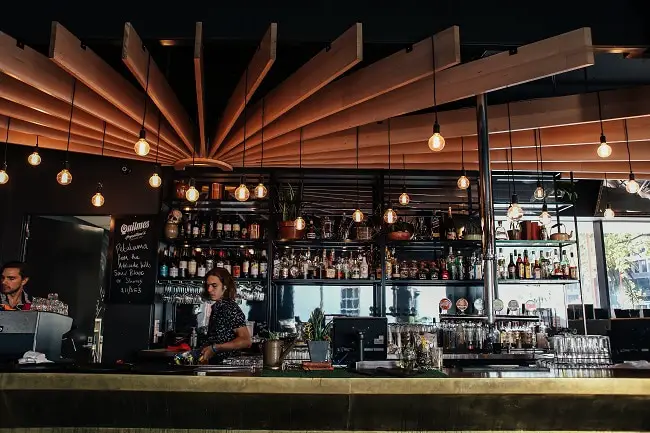
You have a few options when it comes to soundproofing this wall:
Installing soundproof wall insulation
If you opt for insulation, you’ll have to choose between different types. The most common is fiberglass insulation, which usually comes in batts and loose fill form. The loose fill form makes it easy to add to an existing wall without having to tear it down.
An alternative to fiberglass, cellulose insulation is also great for incorporating to already-built walls. This is constructed from recycled newsprint, which has been treated with chemicals. Compared to fiberglass, cellulose option makes for better insulating material, and subsequently, better soundproof.
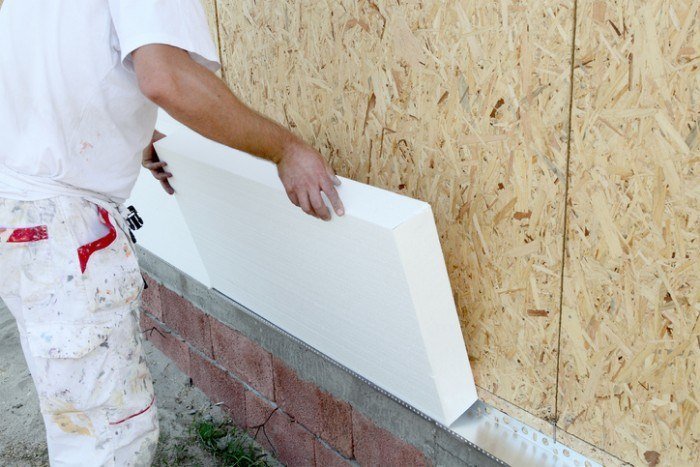
Use Acoustic Resilient Brackets
If you’re still in the design phase of your restaurant, then consider investing in acoustic mounts and brackets to complement your soundproof wall.
The way these work is by decoupling or dissociating one side of the structure. This system allows every side of the wall to vibrate independently, which means noise cannot be transferred into the adjacent space.
Some of the decoupling techniques you can use are: using resilient sound clips or metal furring channels.
Add a soundproofing barrier or sound isolation system
Based on our research, adding a complete soundproofing system within the wall is the best option.
This mechanism combines an array of soundproofing techniques; thus, helping to keep the noise levels in your restaurant space completely low.
2. Use Acoustic Flooring
Other than the walls, the flooring is another medium through which noise is transferred from one area of your restaurant to another.
From footsteps to the movement of chairs, and serving trays, these can all cause a lot of noise that gets echoed into the entire dining area. And considering that the majority of restaurants utilize wood, stone or tile material for their floors, they miss out on the sound-dampening quality that carpeted floors provide.
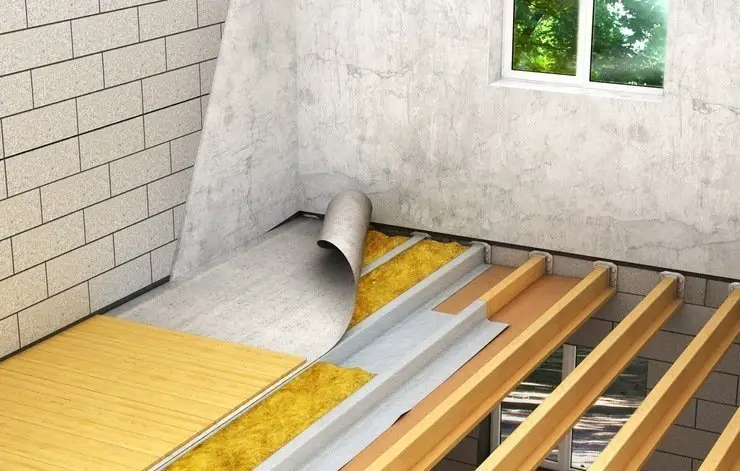
Apart from carpet, here are other floor materials that help to soundproof the floor of your restaurant:
Cork flooring
Made using materials extracted from the bark of a cork tree, cork is an excellent soundproofing material. It’s also sustainable and cozy; hence, ideal for commercial applications. But owing to its susceptibility to denting and staining, experts recommend using it as an underlay to serve as acoustic insulation.
Wood Plastic Composite (WPC) flooring
If you’re looking for a tougher material that can hold up to the high foot traffic of restaurants, WPC is your best bet. It’s waterproof. It’s durable and incredibly easy to maintain.
Its acoustic characteristics are mainly drawn from the backing layer that not only provides soundproofing barrier but also prevents the formation of mold and mildew.
Rubber flooring
If you’re not pleased with WPC, rubber flooring is just as durable an option. While it will provide sound dampening advantages, it will also provide a mold-, mildew- and slip-resistant surface. This makes is a superb choice for restaurants and other commercial spaces like hospitals and gyms.
Vinyl tile flooring
Important to note here is that there’s traditional vinyl tile and luxury vinyl tile. The key difference between the two is that luxury vinyl tile is made with more material, and this results in a better looking and in some cases, better performing floor.
All these materials are great for a restaurant’s acoustic floor. They’re particularly handy in instances where you have a multi-floor building. Let’s say the restaurant is on the first floor. The ideal place to install your acoustic material is on the floor directly above it.
3. Create A Sound Barrier
Often referred to as just as MVL, this is a bulky, limp sheeting material, which is filled with metal particles so as to increase its mass.
As its name suggests, this layer of material is used to increase mass of walls and ceilings- a technique that helps to soundproof a given space. Usually, the MVL is sandwiched between other materials such as two layers of drywall.
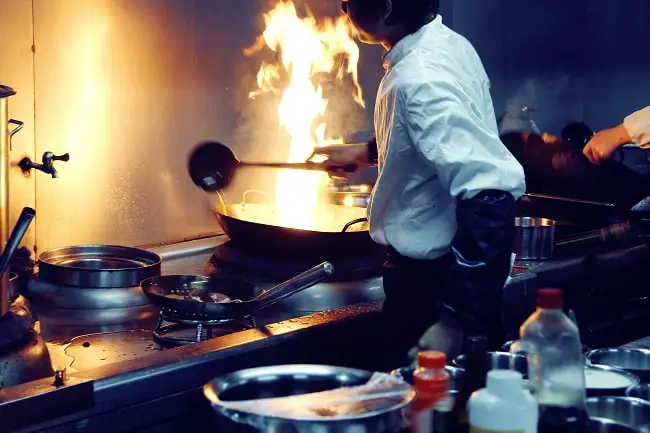
The ideal place to add the MVL barrier is on the interior wall separating the kitchen and the dining area. Since the kitchen is significantly louder, this noise can easily get transmitted to the dining area. Luckily, the MVL barrier can prevent this from happening.
Quick Ways To Deaden Sound:
If you don’t want to bring your restaurant operations to a halt, hereare other things you can do that don’t require renovation:
1. Add acoustic hanging baffles
Hanging baffles are sound-absorbing panels that are made of either soft fabric or foam. These materials are intended to absorb any sound waves in a space as opposed to reflecting them.
When added to a space, they help to minimize the sound reflections such as echoes and reverberations. Given their efficiency at reducing noise levels, they’re often incorporated in large restaurants.
2. Fit a soundproof door on your kitchen
Looking for an economical solution for your noise problem? Adding a soundproof door is as cheap as it can get. With a soundproof door, noise from the kitchen will not sip into the dining area and vice versa.
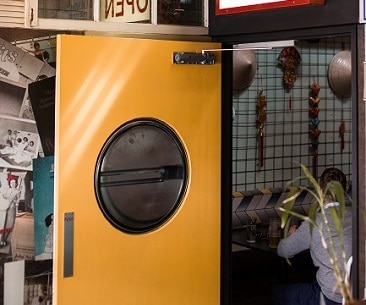
If you’re picking a new door, consider those made from solid materials. Ideally, the thicker the material, the more sound it can absorb. Don’t go for doors consisting of recessed panels, glass sections or hollow cores as they allow more sound to penetrate.
If you already have a solid door, the only thing you need to do is inspect it for gaps. Gaps are one of the biggest sound leaks.
In the event that you don’t have one, install a door sweep and a door seal. A door sweep helps to fill the gap between the bottom part and the threshold. Door seals, on the other hand, seal the gap between the door and the floor beneath it.
3. Move noisy machinery
Some areas of your restaurant will have higher noise levels. The sections near your soda machine and ice machine top that list also if you use waste disposal machines in your kitchen the sound from them can travel very far. If you have tables near noisy equipment, the diners will be forced to talk more loudly so they can be heard…thus creating even more noise!
If you want to create a more welcoming and ambient setting, consider moving these appliances away from the dining areas or switching noisy appliances for purpose-made quiet ones such as quiet garbage disposals.
4. Use tablecloths

While it may not seem like a grand move, adding tablecloths will go a long way to reduce noise in your fast food joint. They will absorb the sounds from the glass and silver utensils. They will dampen the noise from individual table conversations, which is particularly important if you’re dealing with a small space.
5. Space out the tables
Many restaurant owners are tempted to cram in as many tables as they can in their spaces. While this will probably increase your revenue, your customers won’t enjoy their dining experience. This might cause you to lose customers in the long-run.
Ideally, there should be at least 60 inches of space from one table to the next. This way, your diners won’t have to worry about being heard by others. Similarly, they can conduct their own conversations without having to talk so loudly.
Also Read:
How To Silence A Microwave: 4 Solutions
How To Chew Quietly
Final Word
If you run a restaurant, one of the things to keep in mind is that customers come to eat and to converse with their family and friends.
Thus, restaurant soundproofing is a vital part of design. If the noise levels are too high, your clients will look for alternative places to dine at. Good news is: there are a dozen ways to improve the acoustics in your space. These include using acoustic flooring, adding mass-loaded vinyl and moving noisy equipment away from the dining areas.
Even if you have a limited budget, there are pocket-friendly solutions you can opt for. These include installing hanging baffles, adding a soundproof door between the kitchen and dining area, rearranging the space so that any noisy equipment is placed away from the dining area. There should also be ample space between the tables.
As an Amazon Associate I may earn a small fee from qualifying purchases at no extra cost to you. This helps us run the site, so thanks for your support!
